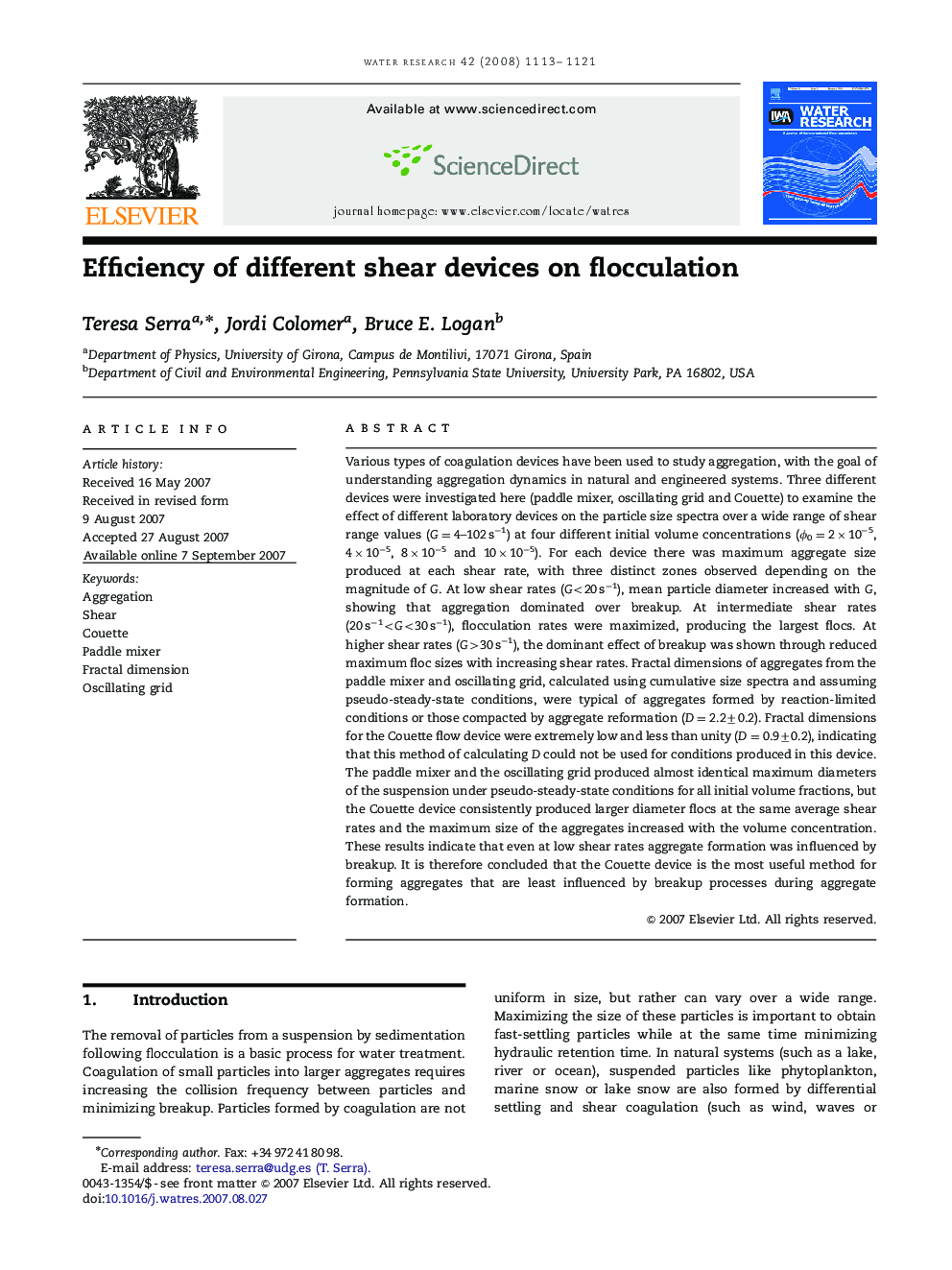| Article ID | Journal | Published Year | Pages | File Type |
|---|---|---|---|---|
| 4483742 | Water Research | 2008 | 9 Pages |
Various types of coagulation devices have been used to study aggregation, with the goal of understanding aggregation dynamics in natural and engineered systems. Three different devices were investigated here (paddle mixer, oscillating grid and Couette) to examine the effect of different laboratory devices on the particle size spectra over a wide range of shear range values (G=4–102 s−1) at four different initial volume concentrations (φ0=2×10−5, 4×10−5, 8×10−5 and 10×10−5). For each device there was maximum aggregate size produced at each shear rate, with three distinct zones observed depending on the magnitude of G. At low shear rates (G<20 s−1), mean particle diameter increased with G, showing that aggregation dominated over breakup. At intermediate shear rates (20 s−1
